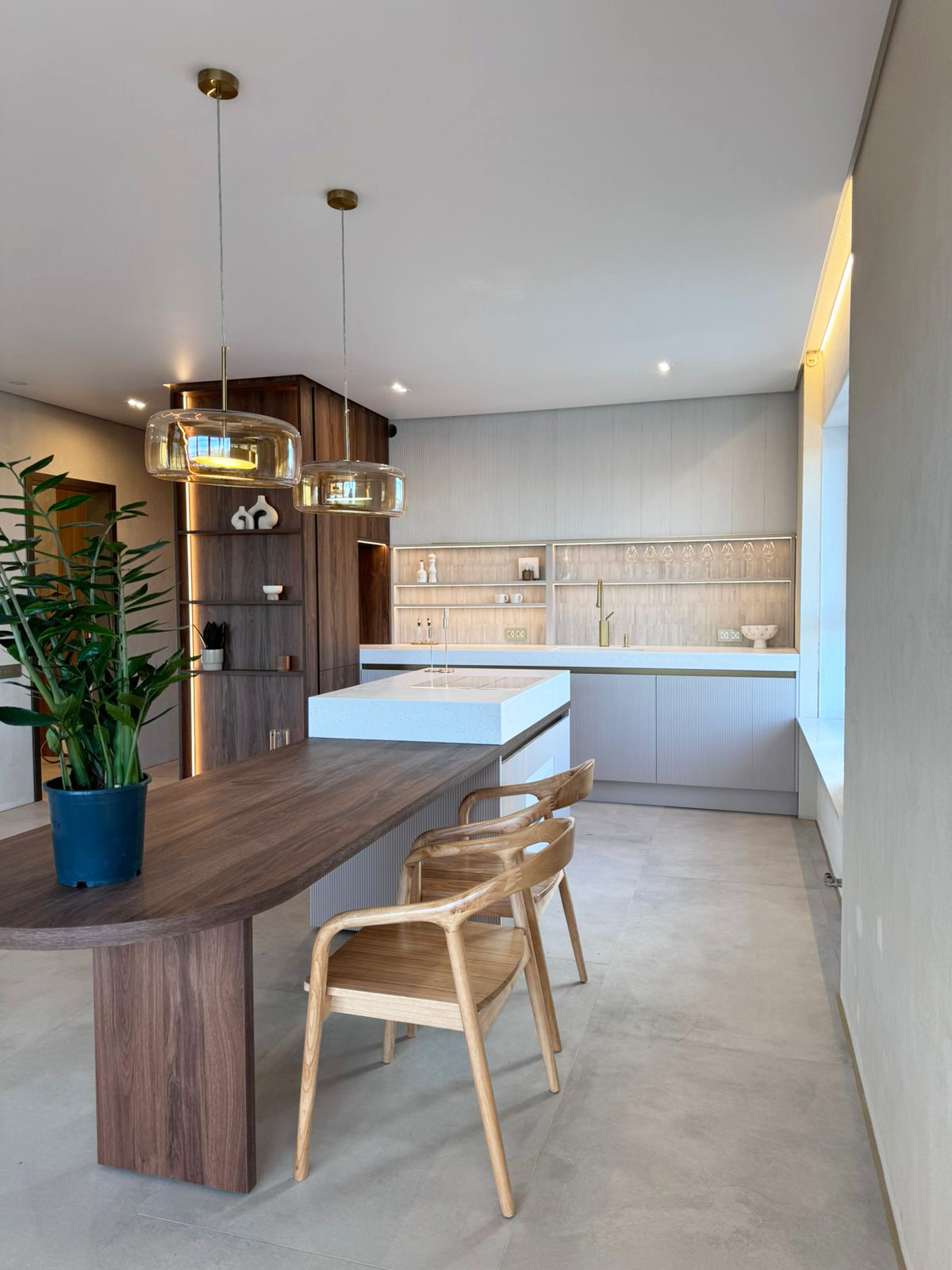
Culinary Spaces Redefined
The Evolution of the Kitchen
In the past, kitchens were often small, isolated, and utilitarian spaces where meals were prepared away from the eyes of guests. However, the role of the kitchen has dramatically transformed over the years. Today, it stands as the heart of the home—a place for social gatherings, family bonding, and a showcase of design and technology. This evolution is a response to our changing lifestyles, where cooking and socializing converge, leading to the creation of open-plan spaces that encourage interaction and entertainment.
Design Trends and Innovations
The redefined culinary space is characterized by sleek and sophisticated designs that blend aesthetics with functionality. State-of-the-art appliances are seamlessly integrated into kitchen units, maintaining a clutter-free environment. The use of materials such as quartz countertops, hardwood floors, and stainless steel features not only adds durability but also contributes to the overall allure of modern kitchens. Additionally, smart kitchens are on the rise, with technology playing a key role in managing kitchen tasks through the internet of things (IoT) and enhancing the cooking experience.
The Rise of Multipurpose Kitchen Islands
Central to the modern culinary space is the kitchen island, which serves multiple purposes. It's a prep station, a dining area, and sometimes even a workspace. The versatility of the kitchen island facilitates various activities, from homework sessions to casual dinners, while allowing the cook to interact with others. Customizable features such as pop-up electrical sockets, integrated wine coolators, and adaptable storage solutions are transforming kitchen islands into dynamic and indispensable components of the kitchen.
Outdoor Kitchens: Extending Culinary Boundaries
Outdoor kitchens are another significant dimension of redefined culinary spaces. These areas allow cooking aficionados to take their passion al fresco, offering a change of scenery and ambiance. Equipped with grills, smokers, and even pizza ovens, outdoor kitchens are not just for summer barbecues anymore—they're equipped to operate year-round in many climates, extending the home’s living space and the culinary experiences that can be enjoyed.
Sustainability and Conscious Cooking
Sustainability is at the forefront of kitchen design and usage today. Energy-efficient appliances, recycling systems, and composting options are becoming standard features as homeowners increasingly seek to minimize their environmental footprint. Additionally, the growing trend of plant-based diets and home gardening is fostering a new appreciation for fresh, locally sourced ingredients, influencing kitchen design to accommodate indoor herb gardens and storage for homegrown produce.
Community and Culinary Cooperation
Redefined culinary spaces are also playing a vital role in community building. Communal kitchens in shared living spaces and neighborhoods are emerging, providing a platform for cooperative cooking, learning, and sharing meals. These communal spaces not only create opportunities for cultural exchange and social interaction but also offer a solution to space and resource limitations in urban environments.
Conclusion
The culinary space of today transcends its traditional boundaries and roles. It’s a reflection of our modern lifestyles, priorities, and the technological advancements that shape our daily lives. As we continue to innovate and redefine these spaces, we not only enhance our cooking experiences but also strengthen the social fabric of our homes and communities. The future of culinary spaces is bound to be exciting, adaptive, and more integral to our way of living than ever before.